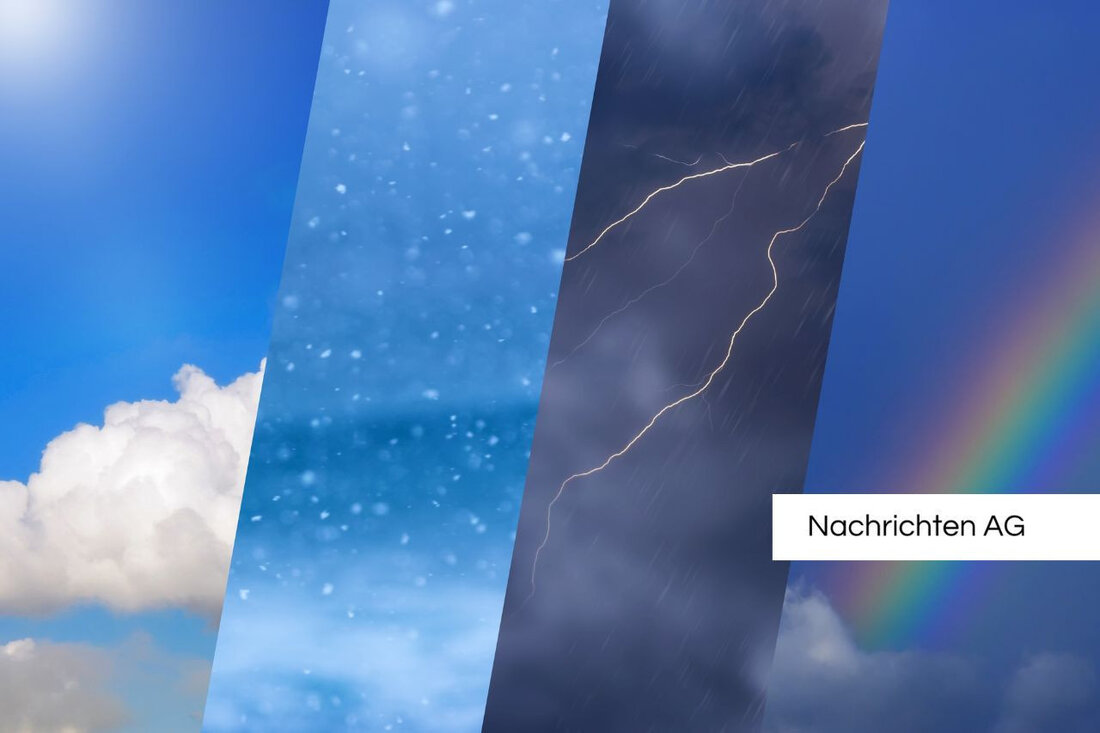Smoke from Canada ensures cloudy days and spectacular sunsets!
Smoke from Canada ensures cloudy days and spectacular sunsets!
parts of southern Germany experienced an unusual weather phenomenon on Tuesday, June 10th, 2025: a dense cloud cover lay over the region. The reason for this is severe forest fires in Canada who have carried their smoke to Europe. The German Weather Service (DWD) explains that western wind currents have brought the smoke to Europe and Germany. This "milky veil" did not suddenly occurred, but was distributed over several hundred kilometers. A cloud of smoke has been moving over Germany since Monday, which has also reached parts of France, Switzerland, Austria and Italy.
satellite images show that the smoke has subsided over the Alpine region since Monday morning. The EU-Erd observation program Copernicus had already reported last week that the smoke from Canada reached Europe. The possible consequences are cloudy days and red-in-or-colored sunsets. However, the DWD points out that larger effects on the air quality near the ground are not to be expected, since the smoke is transported in higher air layers. In the short term, no complete clearing of the smoke can be expected in the Alpine region.
The way of smoke to Europe
The smoke of the forest fires in Canada has now crossed the Atlantic and has reached Europe. According to the DWD, another spread is imminent: The EU-Erd observation program Copernicus reports that additional clouds of smoke will reach Europe in the coming days. The first cloud of smoke crossed the Mediterranean at the end of May, while a second, larger cloud of smoke reached northwestern Europe in the last week of May.
In the Canadian provinces of Saskatchewan, Manitoba and Ontario, there were considerable emissions, with temporarily over 100 flocks of fire, which were favored by extraordinary dryness and wind. Thousands of people had to be brought to safety as a precaution. Also in the southeast of Russia, especially in the Republic of Burjatia and the Transbaical region region, large forest fires have been raging since April, which also contribute to a global spread of smoke.
causes and prevention of forest fires
The increase in forest fires is often associated with climate change. Experts like Johann Goldammer point out the challenges in forest management. Lower management could lead to more biodiversity and carbon binding, but also to accumulate dead wood, which serves as a potential fuel. Deadwood stores water and carbon, but can tighten the effects of fires.
Targeted reforestation is considered important to minimize future fire risks. The Federal Environment Agency (UBA) recommends converting needle tree monocultures into multi-layered mixed forests, since leafywoods burn more slowly and keep the spread of fires in check. However, each individual can contribute to the prevention of forest fires - for example by compliance with four rules, which are propagated as part of the "Focus Wald" information campaign:
- Do not ignite an open fire in the forest or near the forest.
- grilling only allowed on released barbecue areas.
- smoking in the forest from March to the end of October banned in all federal states; in six federal states all year round.
- do not throw glowing cigarettes out of the car.
- cars should not be parked in the forest or on dry grass to avoid the risk of fire through hot catalysts.
The current situation illustrates how closely the topics of forest fires, climate change and human action are linked. The consequences are not only noticeable, but also have a lot of distances.
For further information on the effects of the forest fires in Canada and their consequences in Europe, visit Süddeutsche.de , Quarks .
| Details | |
|---|---|
| Ort | Kanada |
| Quellen | |


Kommentare (0)